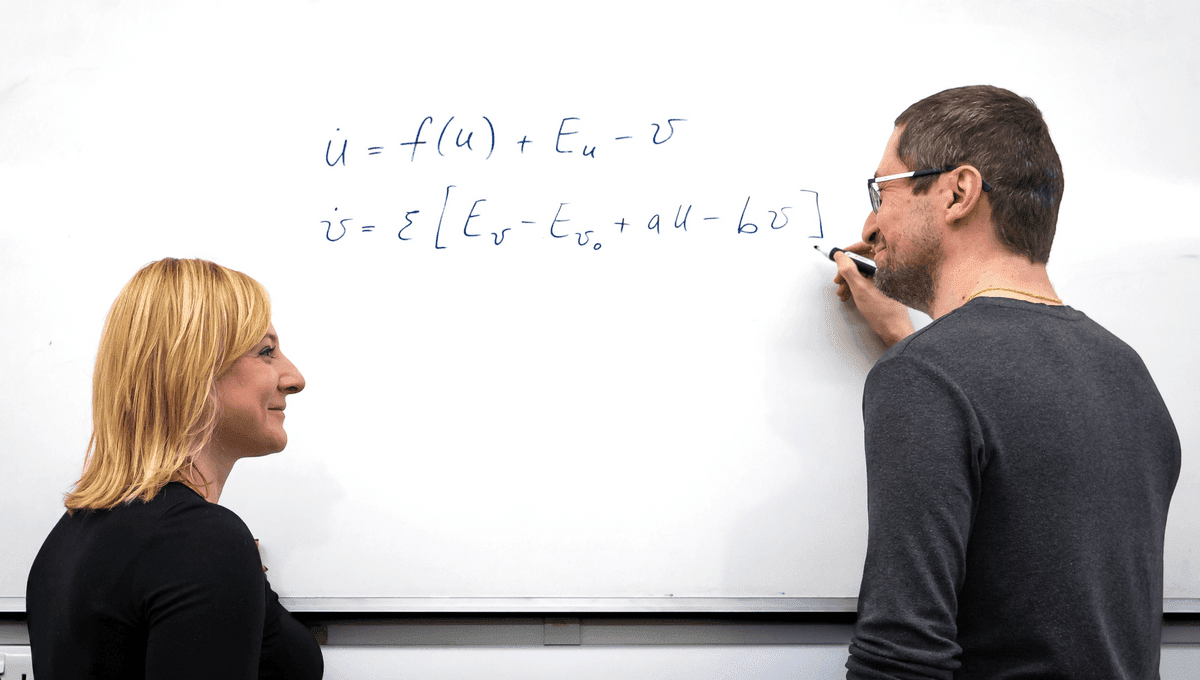
Mathematics teachers faced with students asking “When am I ever going to use this?” may have a new answer. It’s one that may give a lot of teenagers a whole new respect for their subject, but it could also lead to tricky conversations with parents and school principals: researchers have mathematically modeled what makes men orgasm.
The model considers what Masters and Johnson called the human sexual response cycle of excitation, plateau, orgasm, and resolution. However, where previous sex researchers have discussed these only in general terms, Dr Konstantin Blyuss and Dr Yuliya Kyrychko of the University of Sussex use hard numbers. The work, titled “Sex, ducks, and rock ‘n’ roll”, is published in the appropriately named journal Chaos, four days too late for April Fools’ Day so you know it’s serious.
Mathematical models are now applied to aspects of human life, with the required numbers from observations and experiments increasingly widely available. “One exception,” the paper notes, “is a physiological description of human sexual function, which has been largely based on self-reporting surveys, and until very recently not amenable to accurate measurements in controlled conditions, which prevented mathematical analysis of this process.”
Let’s face it, people have a propensity to lie about sex, and when you need them to recall things precisely enough to put a number value on it you probably wouldn’t want to rely on what they tell you. Researchers can’t even trust men on their penis size, and that’s pretty easy to check.
These days, however, we have access to measurements of arousal collected from men who engaged in sexual acts, alone or with company, in fMRI machines. Blyuss and Kyrychko applied their experience in epidemiology to analyze data from that study, which included an impressive 10,000 sexual acts and more than 300 male participants..
Blyuss claims in a statement that “We have developed the first successful mathematical model of sexual performance. Our results cover the physiological and psychological aspects required to reach climax. They reinforce, and mathematically prove, existing studies into the psychology of sex.”
The model doesn’t just explain orgasms during sex and masturbation, but also how large deviation theory can predict the likelihood of wet dreams.
“A key finding is that too much psychological arousal early in the process can inhibit the chance of reaching climax,” Blyuss said. “Simply put, our findings can be summarized as ‘don’t overthink it.'”
The pair have created two equations that describe what determines whether a man will reach orgasm, one physiological and the other psychological. The equations allow for differences between individuals, for example considering factors such as spinal injuries that make it harder to climax, but no allowance is made for inconsistencies of gender and sex.
If you’re wondering where the ducks come in, the title is not a reference to the Argentinian duck, the vertebrate with the longest penis-to-body ratio, or any other aspect of waterfowl shenanigans. Instead, the authors used a mathematical technique which, when graphed, looks duck-like, earning the name canard (French for duck). “Orgasmic trajectory can be characterized as a ‘canard with head,’ while an anorgasmic trajectory is a “canard without head’,” the paper reports.
Like Einstein progressing from Special to General Relativity, Kyrychko adds; “With what we have learned from this study, we intend to mathematically model the female sexual response, which is physiologically – and mathematically – more complex than the male response.” We’ll wait to see if they succeed, but perhaps first they need to test the validity of their equations for men. There shouldn’t be a shortage of volunteers.
The model is published in Chaos: An Interdisciplinary Journal Of Nonlinear Science.
Source Link: The Mathematical Path To Men Achieving Orgasm